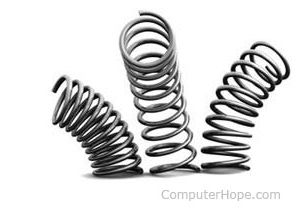Bounce rate
Updated: 06/22/2024 by Computer Hope

The bounce rate describes the number of visitors to a web page that leave after only visiting one page (landing page). For example, if a page has a bounce rate of 75%, 75% of the page's visitors left without reading other pages.
In most situations, a bounce rate higher than 50% indicates that a visitor didn't find what they wanted or didn't find anything intriguing about your web page. However, that said, the bounce rate can increase or decrease depending on your web page content. For example, a retail website has a lower bounce rate than a content website.
How can I reduce my site bounce rate?
- Add something that grabs the reader's eyes, like an eye-catching image, as shown above.
- Create posts or pages with at least 200 words. Anything less gives the reader the impression that the page will not have what they want or is not in-depth.
- Keep your site and pages as up-to-date as possible. If the page was last updated in 1992, visitors would think the page is irrelevant.
- Break text into short paragraphs or a list with bullet points to make it easier for the reader to scan. A wall of text overwhelms most visitors.
- Keep the site fast. Today, everyone has gotten used to fast results. Most visitors won't wait around if your page takes more than a few seconds to load.
- Make sure you have a custom 404 error page. If you are using a default error page, any visitor who gets an error will immediately leave.
- Avoid distractions. Flashy advertisements, pop-up ads, and excessive advertisements turn off for most visitors.
- Create follow-up links that users can follow for related information they may be interested in reading.
- Test your website with multiple platforms, browsers, and devices. If the font is hard to read or the page has other problems with a specific platform, all those visitors will bounce.
Advertising, Conversion rate, CTR, Internet terms, Landing page, Page views, Rate, SEO, SEO terms, Traffic
